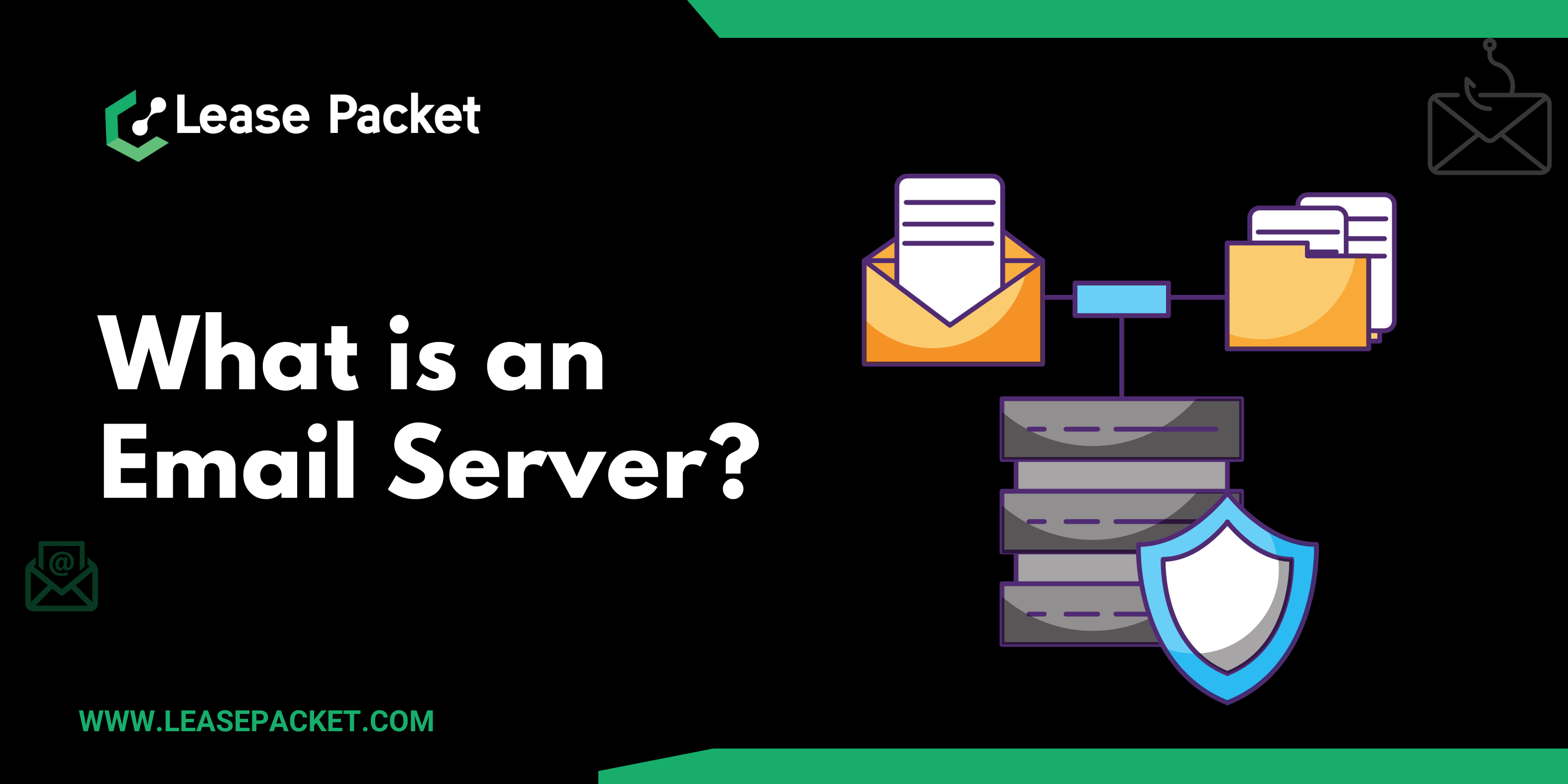What is an email server?
 Lease Packet
Lease Packet
In the vast landscape of digital communication, email remains an indispensable tool, powering professional correspondence, personal interactions, and business transactions. At the heart of this intricate network lies the email server, a critical component that ensures the seamless flow of messages across the internet. In this comprehensive blog, we will delve into the depths of what an email server is, how it functions, and why it is so vital in the realm of online communication.
The Fundamentals of Email Servers
An email server, often referred to as a mail server, is a specialized computer or software application responsible for sending, receiving, and storing email messages. It acts as the intermediary between the sender and the recipient, facilitating the exchange of electronic messages.
Key Components:
Mail Transfer Agent (MTA): This component is responsible for the transmission of emails between servers. It uses protocols like SMTP (Simple Mail Transfer Protocol) to ensure the reliable delivery of messages.
Mail Delivery Agent (MDA): Upon reaching the recipient's server, the MDA processes and stores the incoming emails. It uses protocols like POP3 (Post Office Protocol 3) or IMAP (Internet Message Access Protocol).
Mail User Agent (MUA): This is the email client used by the end-user, enabling them to compose, send, and receive emails. Popular examples include Microsoft Outlook, Gmail, and Apple Mail.
How Email Servers Work:
Sending Emails:
The process begins when the sender initiates an email through their MUA.
The MUA communicates with the sender's SMTP server, which then contacts the recipient's server using DNS (Domain Name System) to locate the recipient's server.
Receiving Emails:
The recipient's server, equipped with an MTA, accepts the incoming message.
The MDA processes the email, storing it in the recipient's mailbox.
Retrieving Emails:
The recipient, using their MUA, can retrieve stored emails via POP3 or IMAP protocols.
Importance of Email Servers:
Reliability:
- Email servers ensure the reliable and timely delivery of messages, contributing to effective communication.
Storage and Organization:
- Email servers store and organize messages, providing users with a centralized location for their correspondence.
Security:
- Email servers implement security measures, including encryption and authentication, to protect sensitive information during transmission.
Scalability:
Email servers are designed to scale, accommodating the growing needs of individuals and businesses.
Types of Email Servers:
On-Premises Servers:
- Hosted and managed within the organization's infrastructure.
Cloud-Based Servers:
- Utilize cloud services for hosting, offering scalability and accessibility.
Conclusion
An email server stands as the unsung hero of digital communication, orchestrating the intricate dance of data transmission across the vast expanse of the internet. Understanding the nuances of its functioning sheds light on the reliability, security, and efficiency that underlie our everyday interactions through emails. As we navigate the complexities of modern communication, the email server remains a steadfast companion, ensuring our messages reach their intended destinations seamlessly.
FAQs
Q1. How does an email server work?
When you send an email, your Mail User Agent (MUA) communicates with your SMTP (Simple Mail Transfer Protocol) server. The SMTP server contacts the recipient's server using DNS (Domain Name System), and the recipient's Mail Transfer Agent (MTA) processes and stores the email.
Q2. Why is an email server important?
Email servers ensure reliable and timely message delivery, provide storage and organization for emails, implement security measures, and offer scalability to accommodate growing communication needs.
Q3. How does email server security work?
Email server security involves encryption during transmission (using protocols like SSL/TLS), authentication mechanisms to verify sender and recipient identities, and spam filters to protect against malicious or unwanted emails.
Q4. What is the difference between POP3 and IMAP?
POP3 (Post Office Protocol 3) and IMAP (Internet Message Access Protocol) are protocols used by Mail Delivery Agents. POP3 downloads emails to a device, while IMAP allows users to access and manage emails directly on the server, syncing across multiple devices.
Subscribe to my newsletter
Read articles from Lease Packet directly inside your inbox. Subscribe to the newsletter, and don't miss out.
Written by

Lease Packet
Lease Packet
Lease Packet provides the world’s most extensive data center infrastructure and is a global leader in delivering managed server solutions.